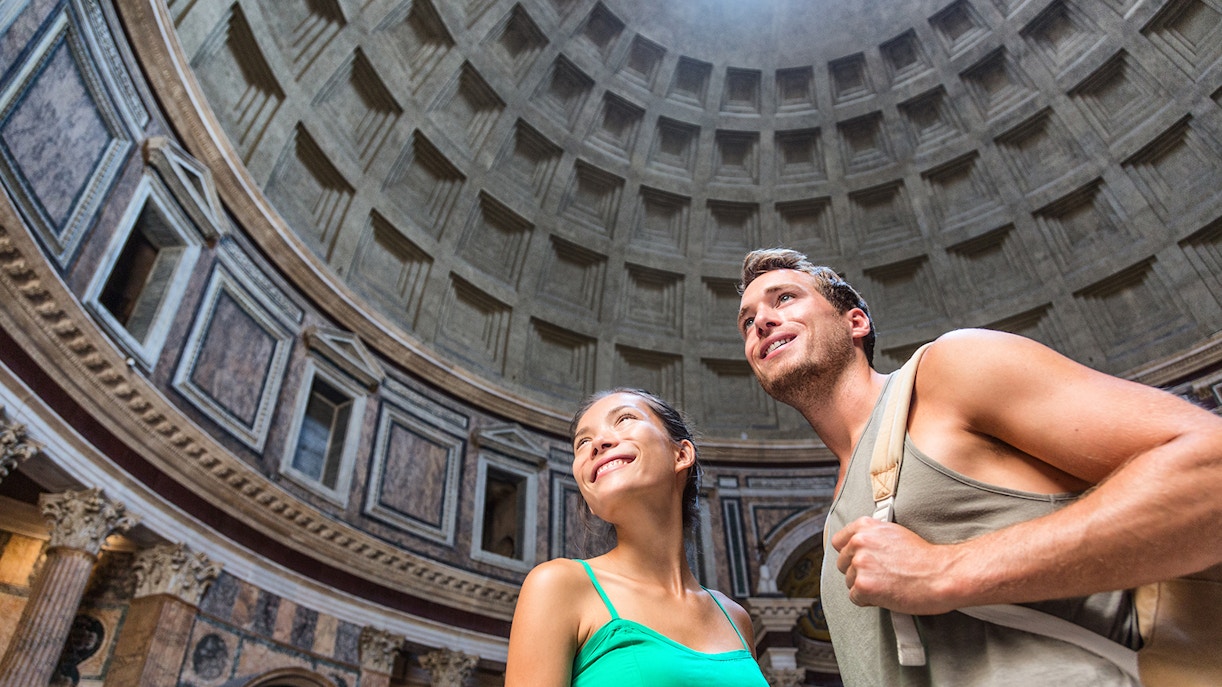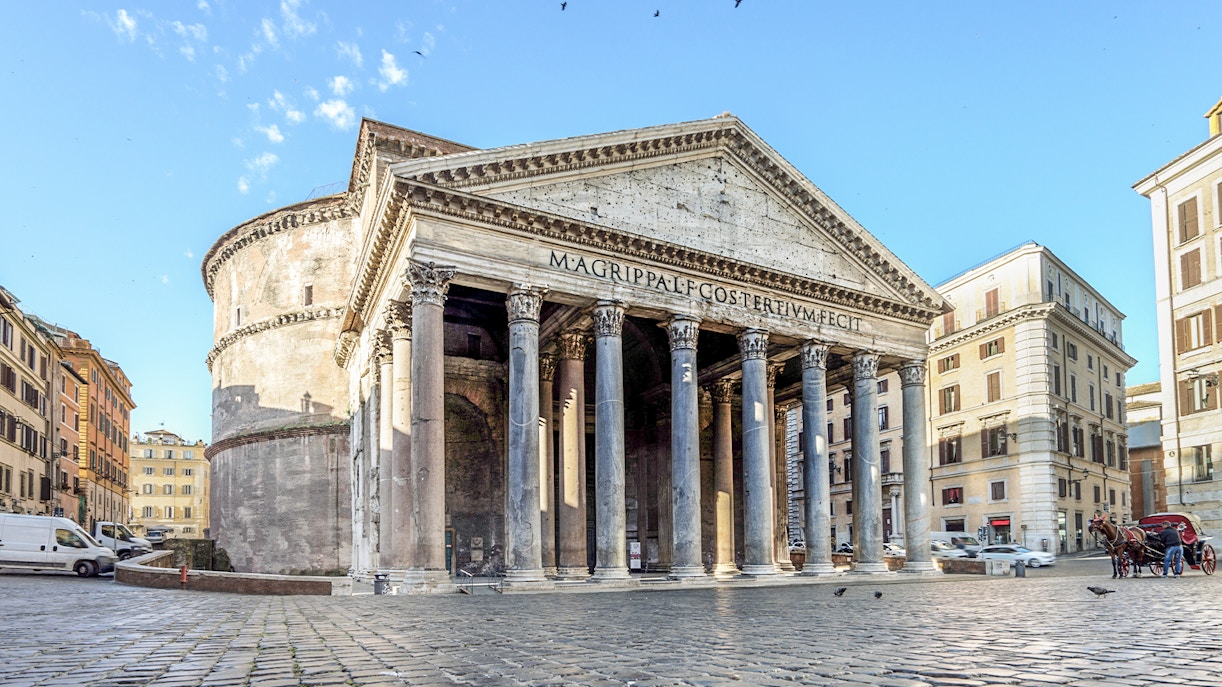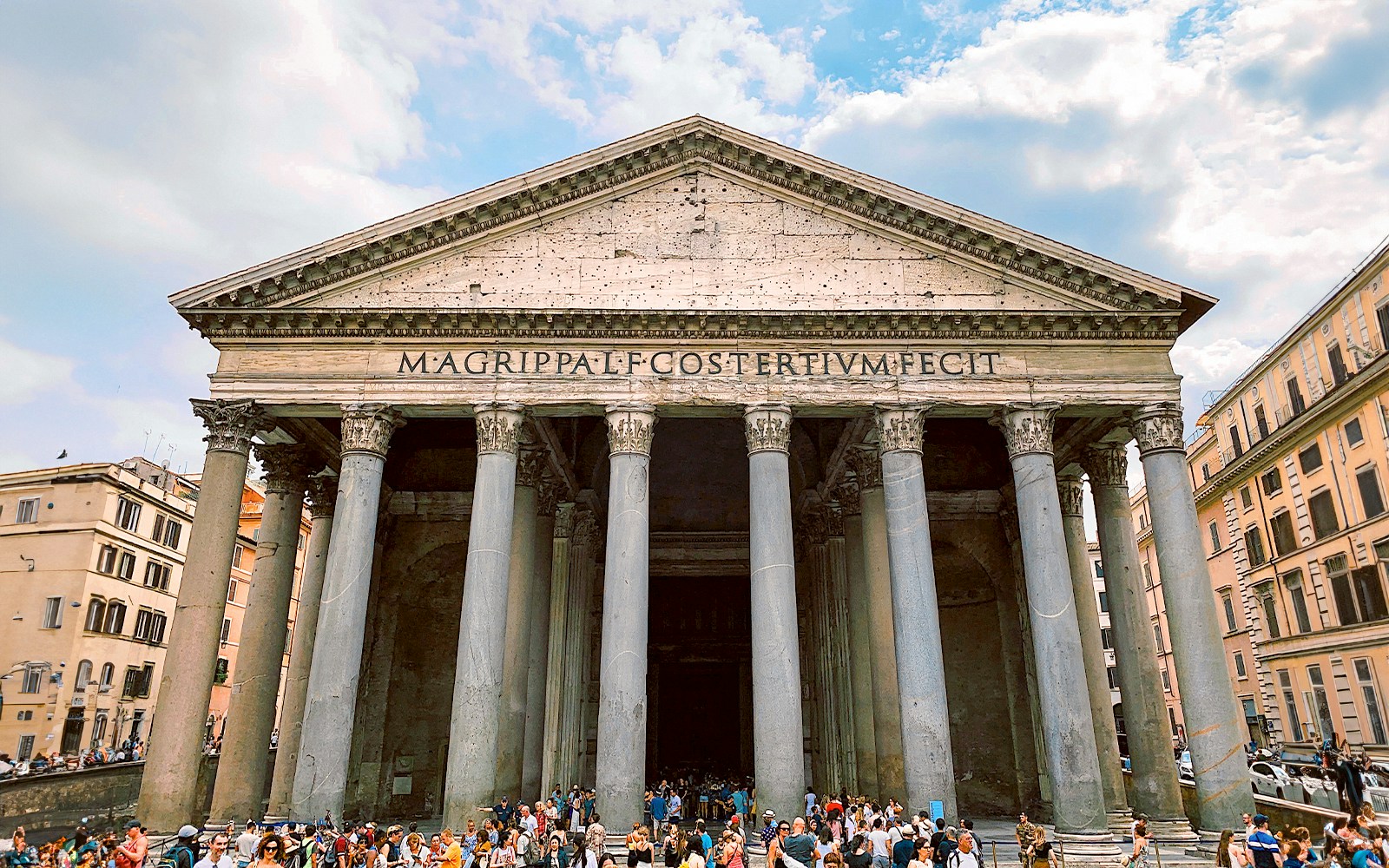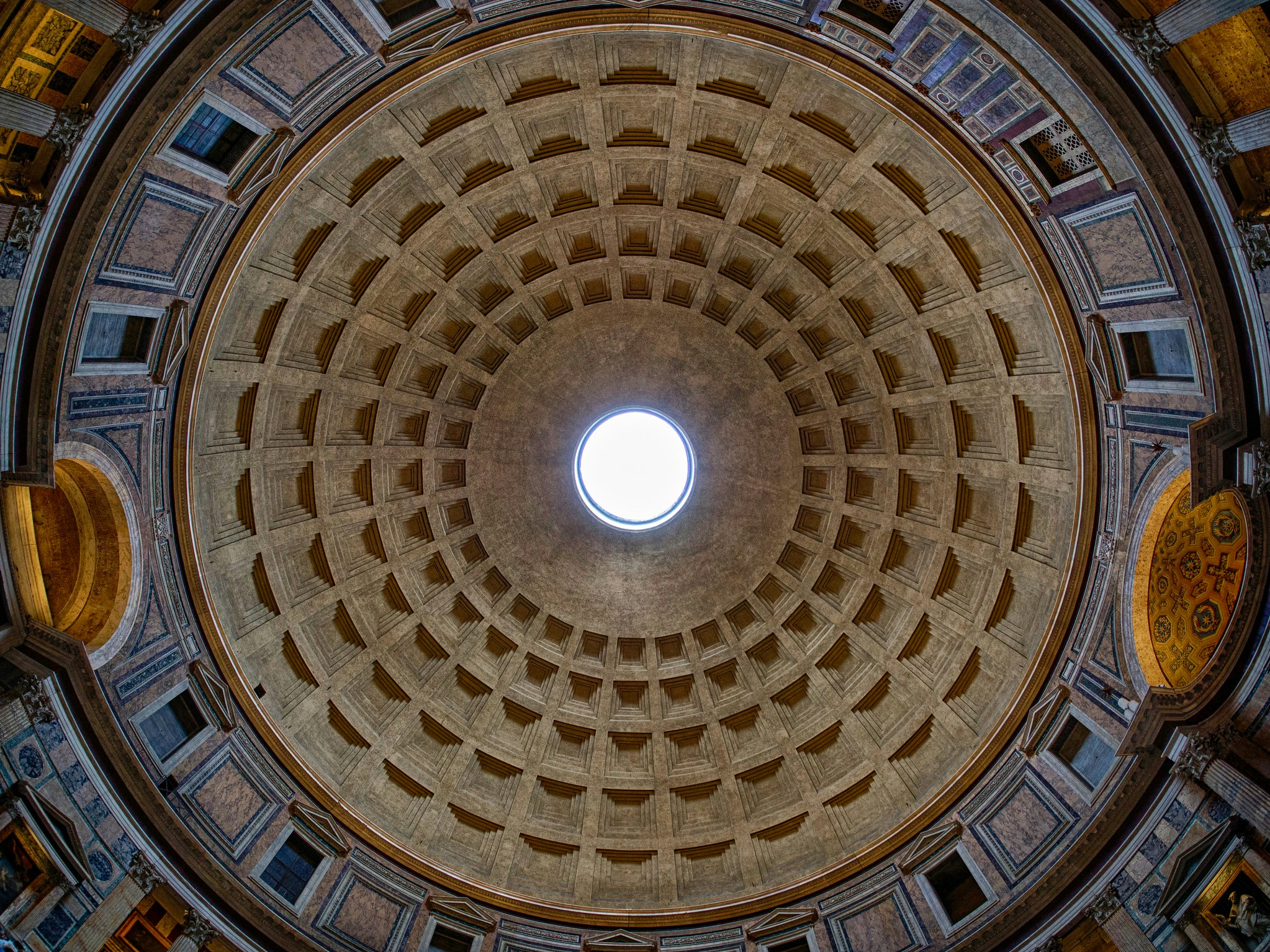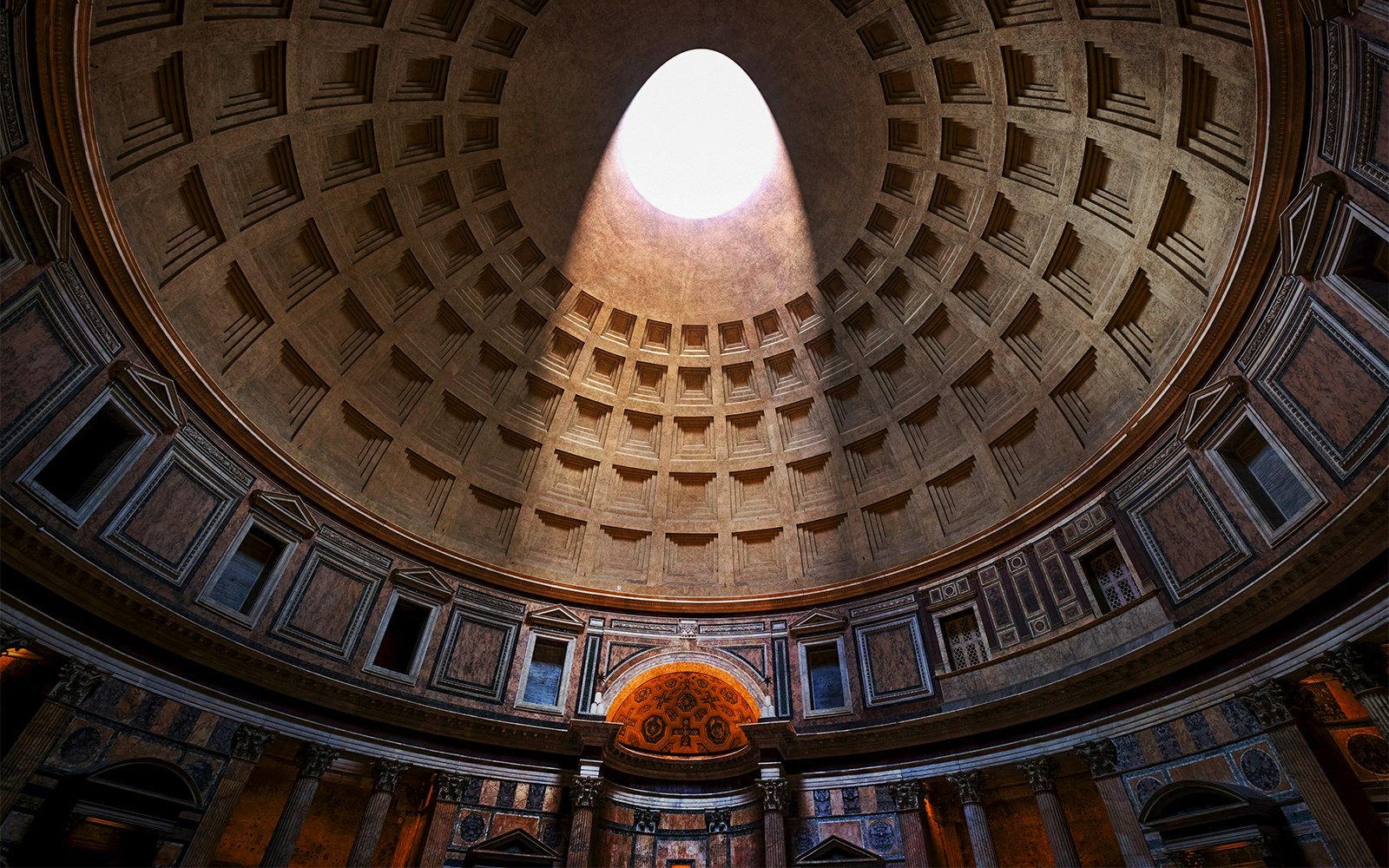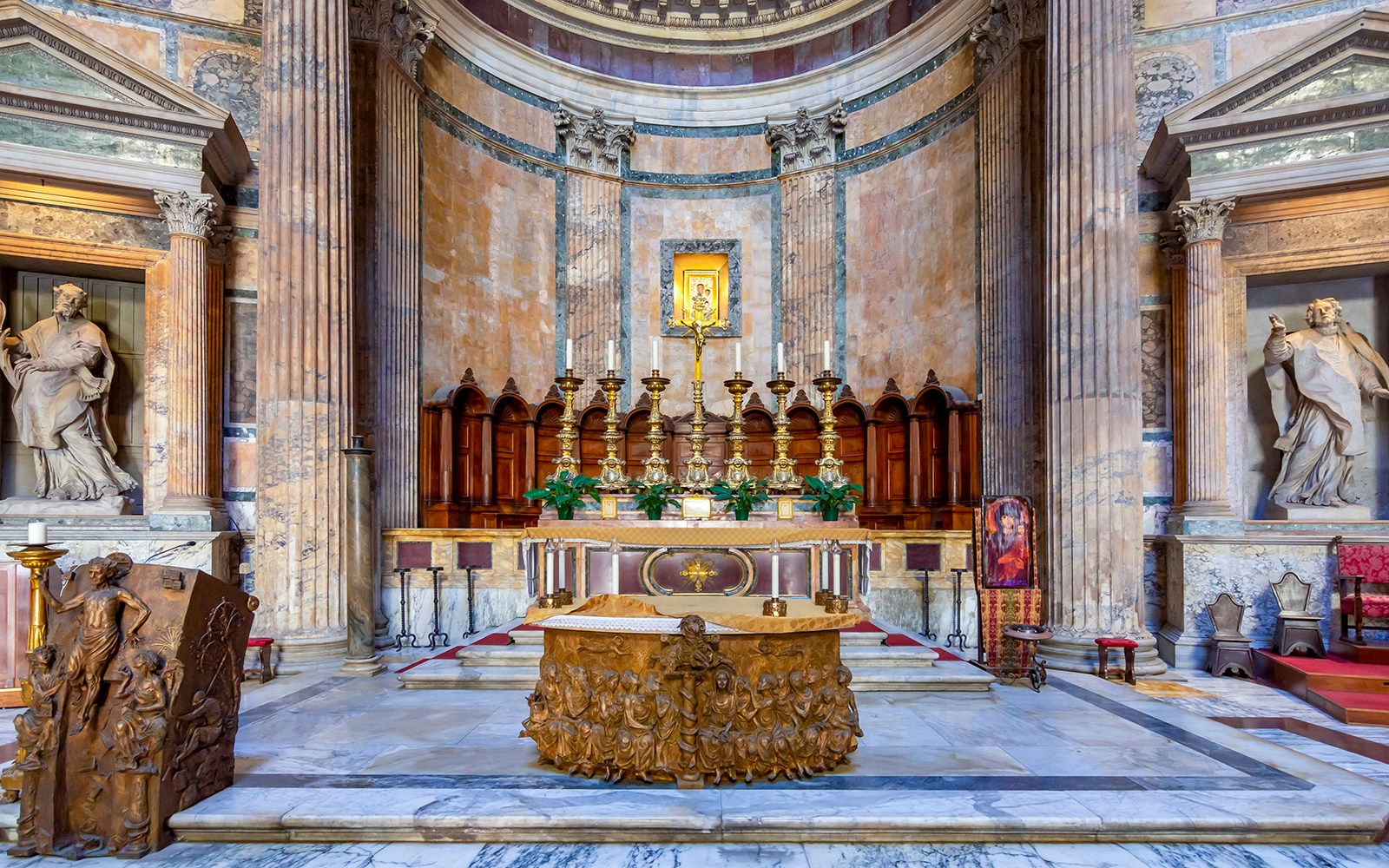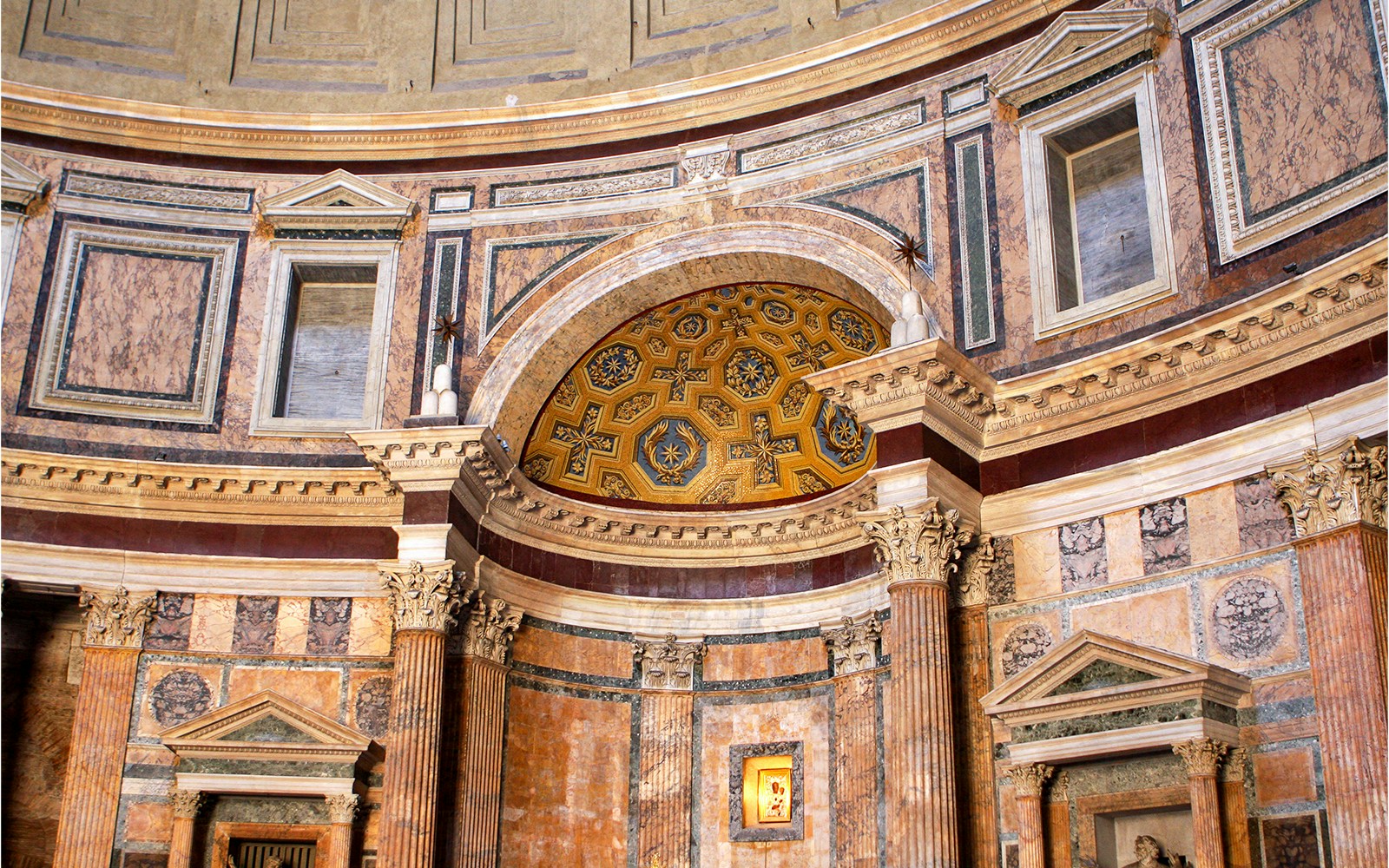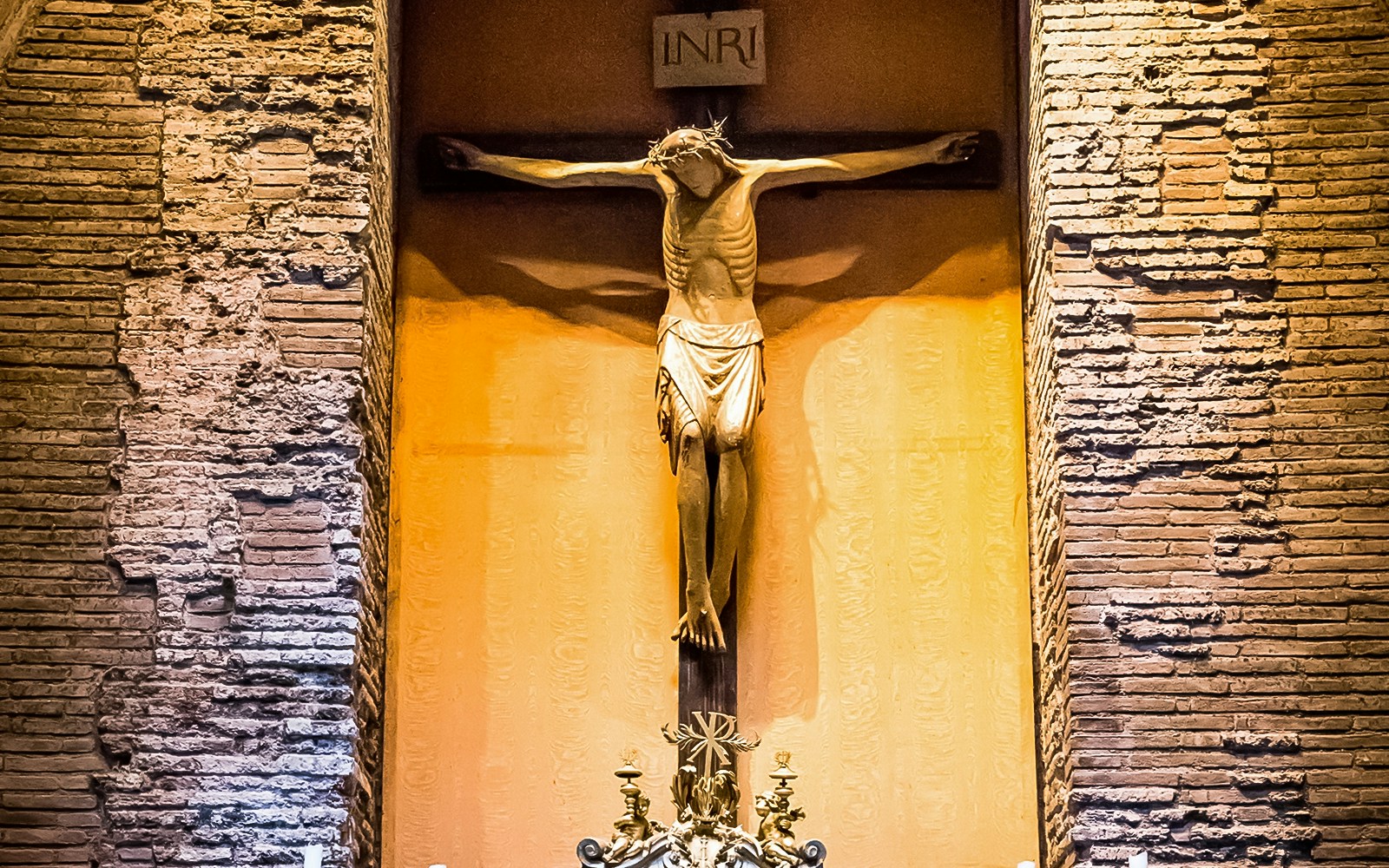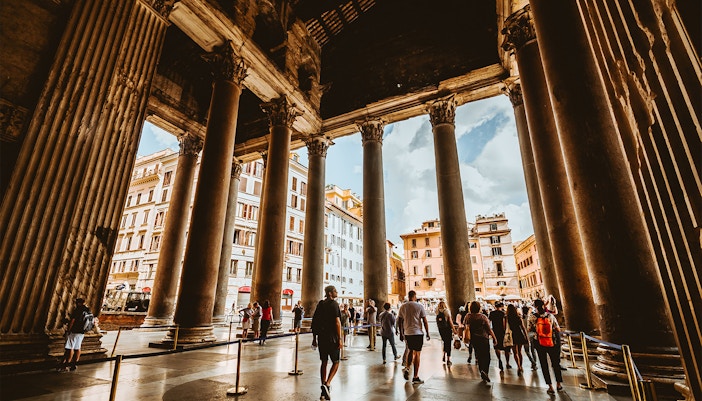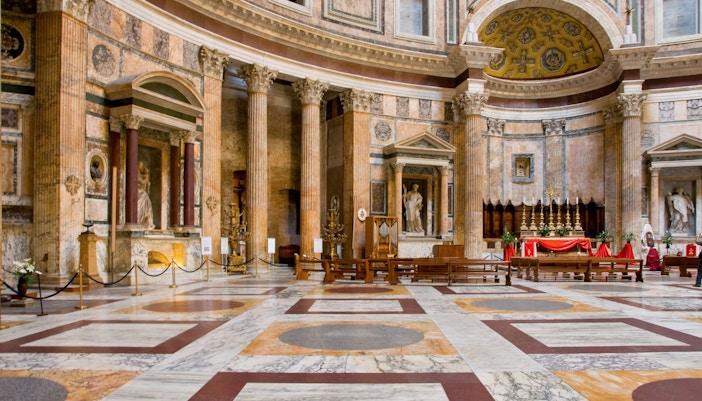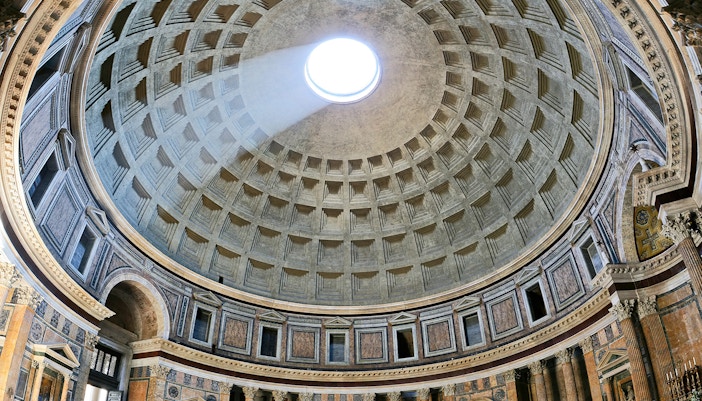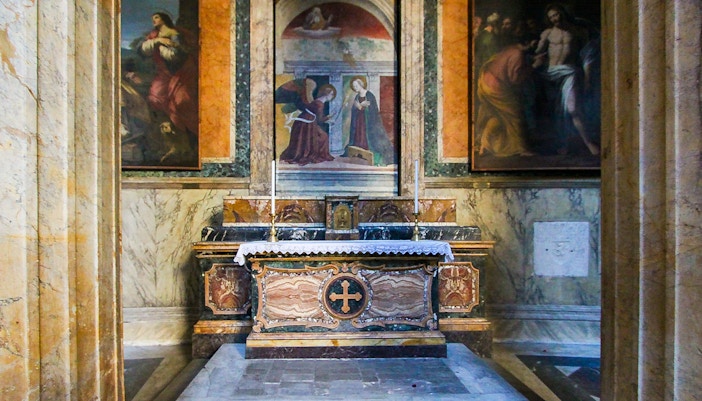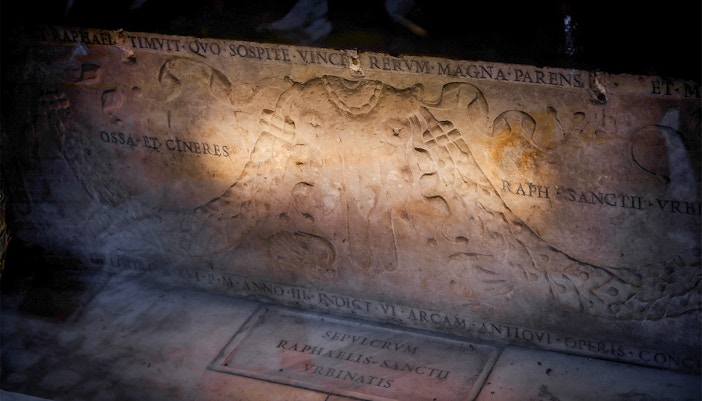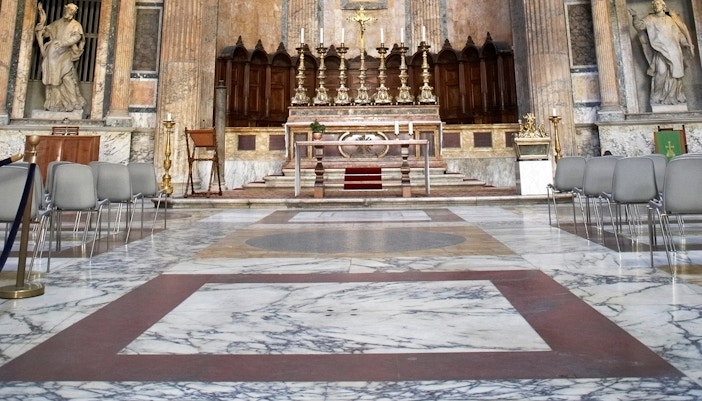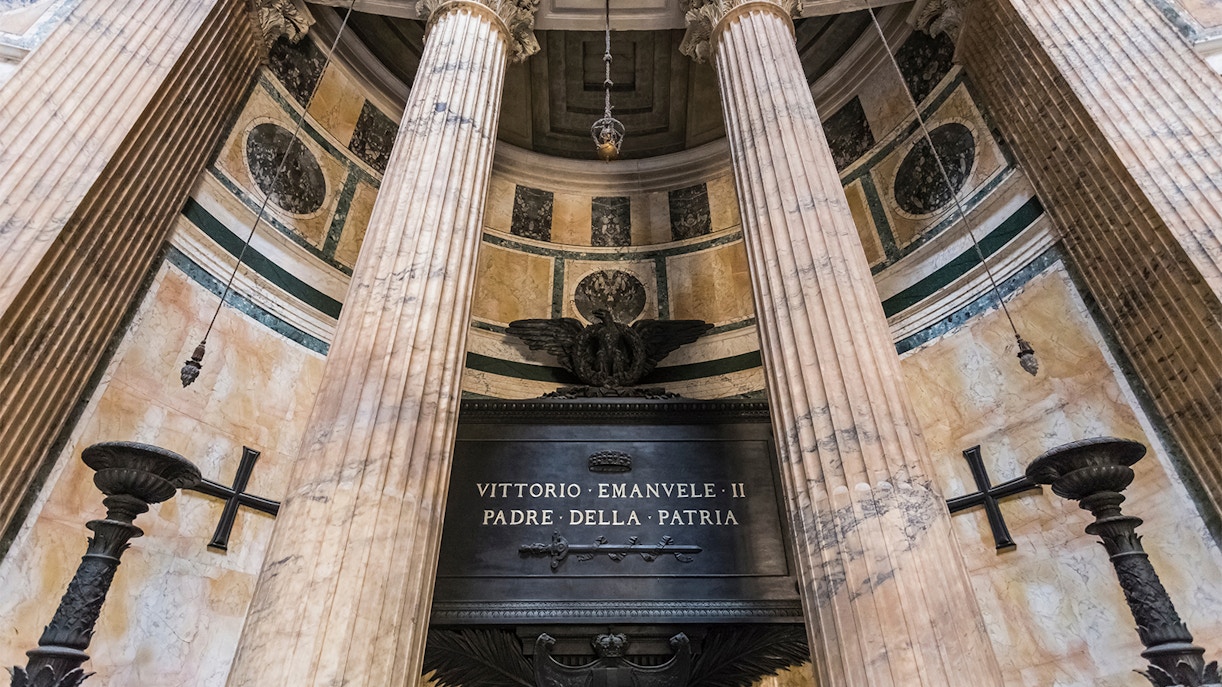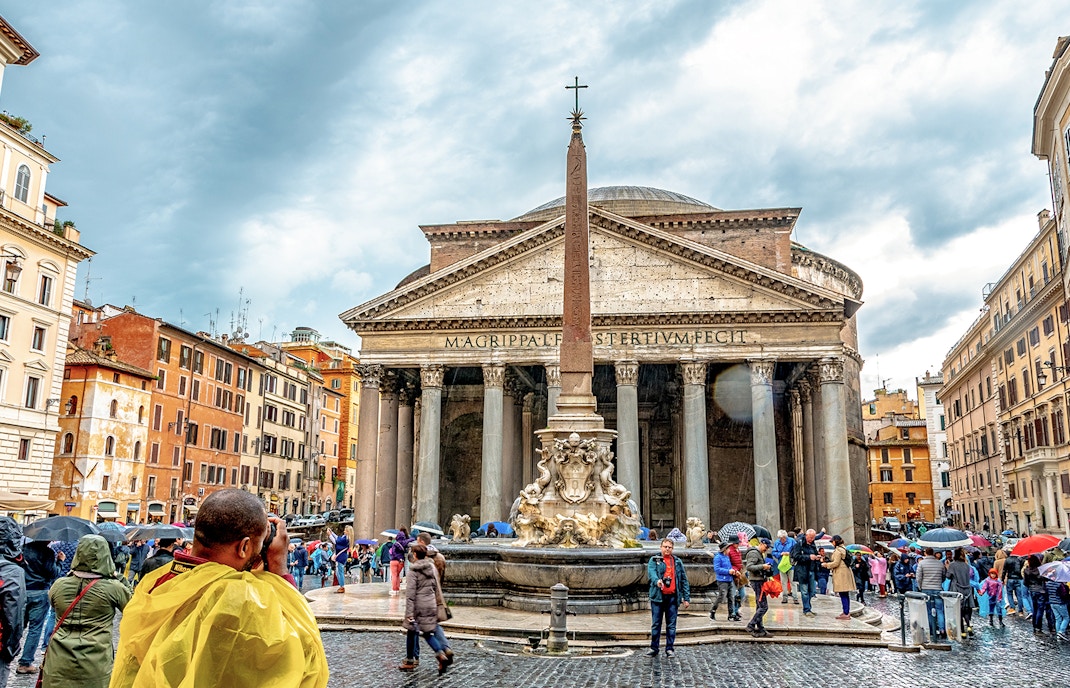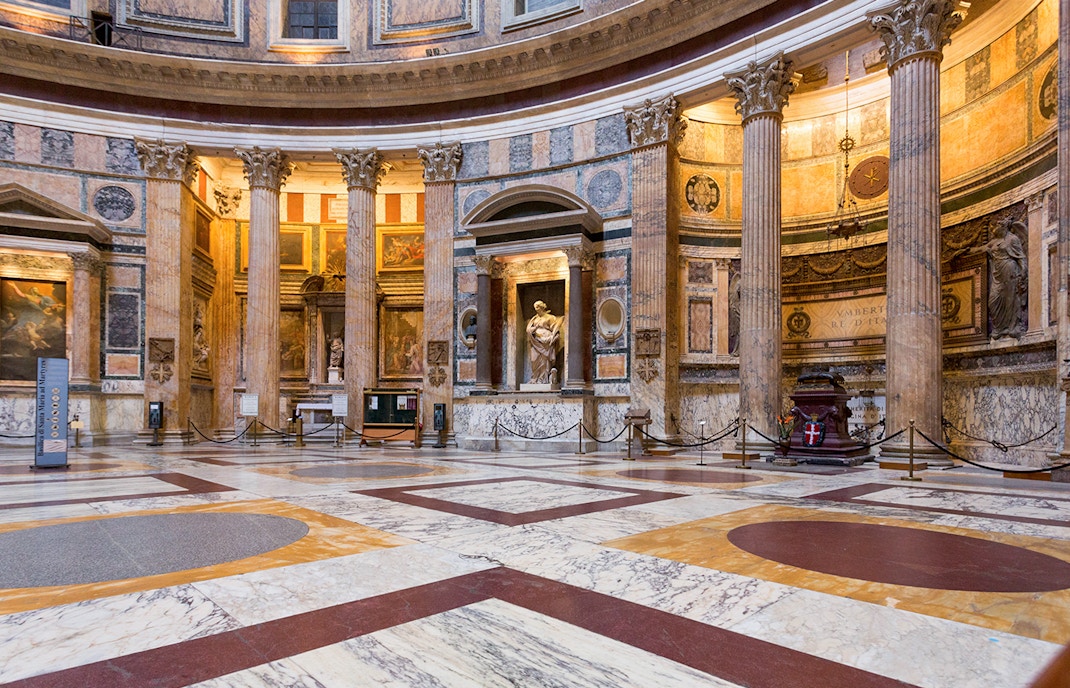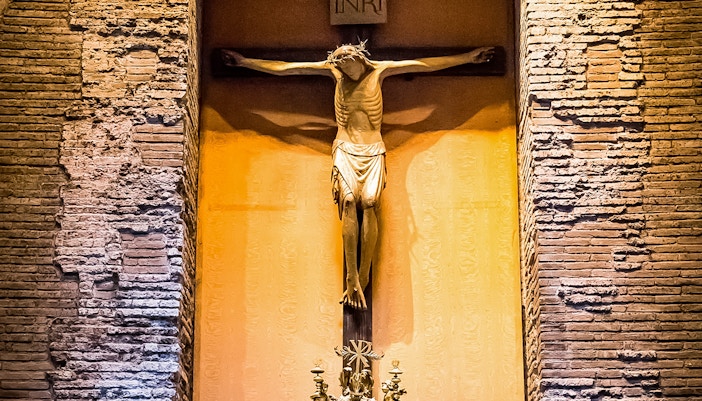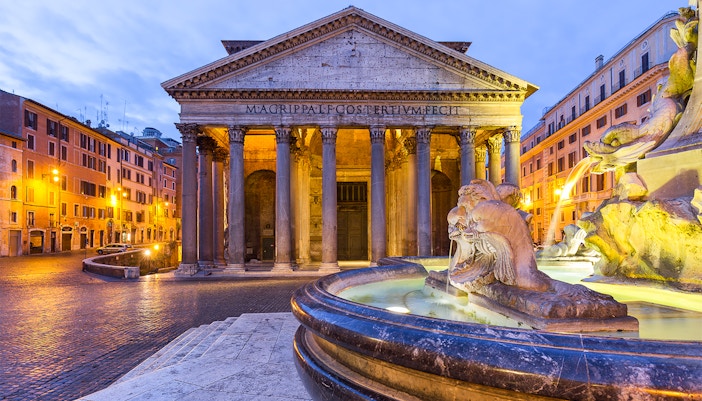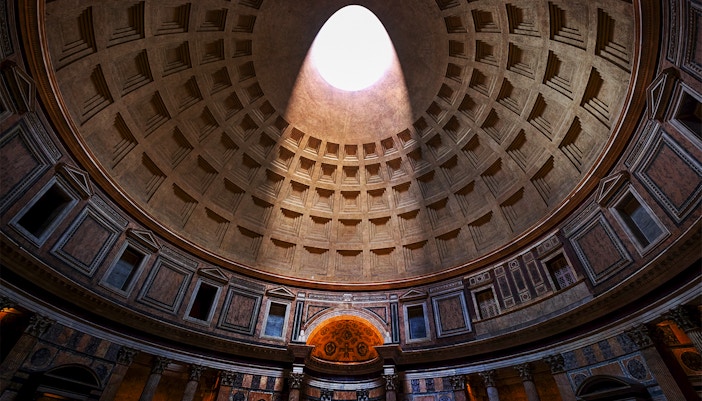- The Pantheon is still a functional monument 2 millennia later: Unlike other ancient Roman structures (like the Colosseum, for instance), the Pantheon has been in continuous use for over 2,000 years. Its transformation from temple to church highlights Rome’s religious evolution. As the building was the expression of such changes, it remained (and remains) relevant even today.
- Impressive use of concrete: The rotunda and the dome are entirely made of poured concrete. This suggests the advancement of Roman technical skill in those times as they were well-versed with the properties of concrete — a material that was still widely not used in ancient Roman construction. Concrete is an obedient material that takes the form of whatever it is poured into, and acts as an excellent casting material.
- Cultural emblem synonymous with Rome: The Rome Pantheon is an iconic symbol of Rome, cherished by both visitors and locals alike. From postcards to keychains and pop culture, it has found its way into the city’s cultural and commercial expressions.
Why is the Pantheon famous in Rome?
